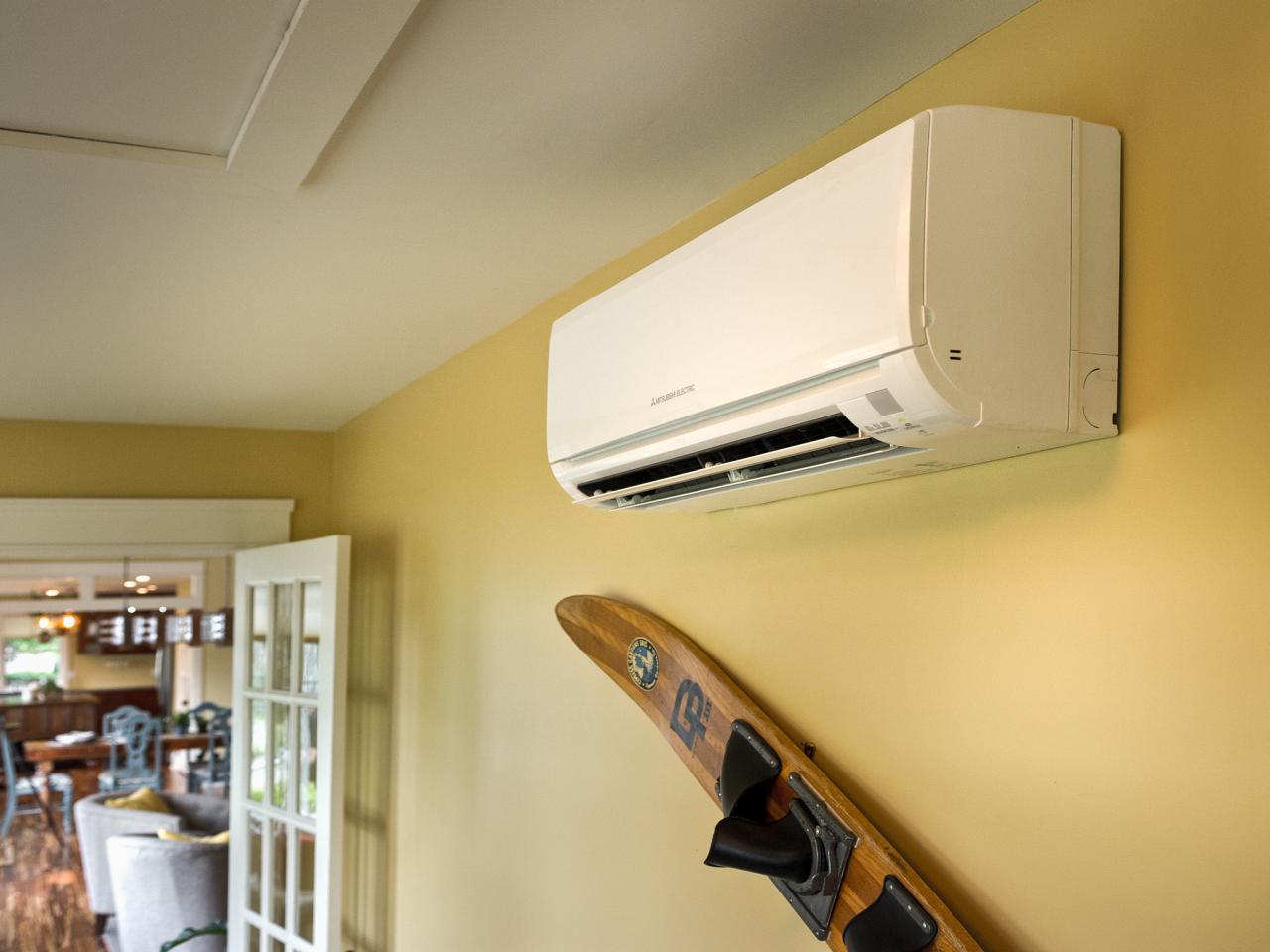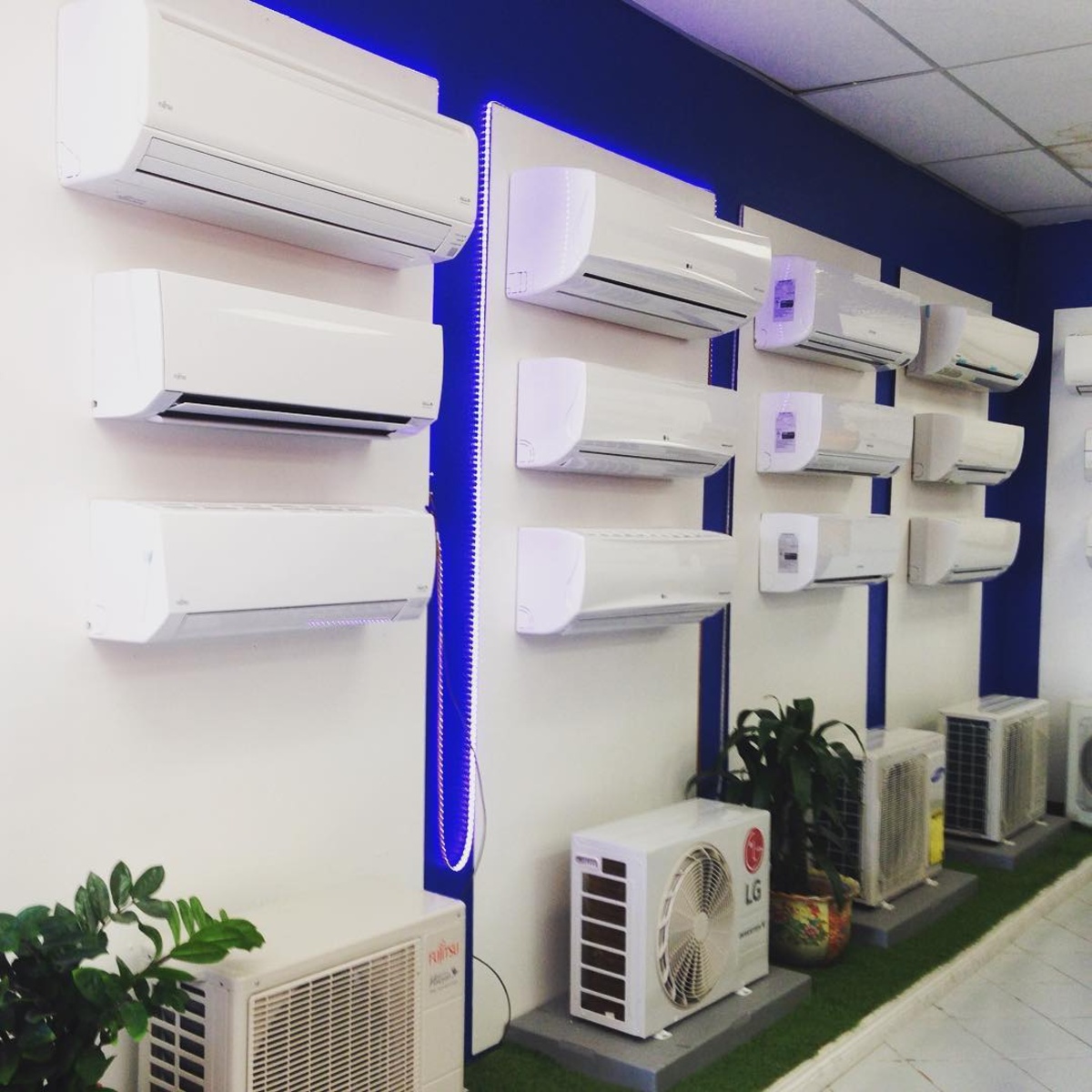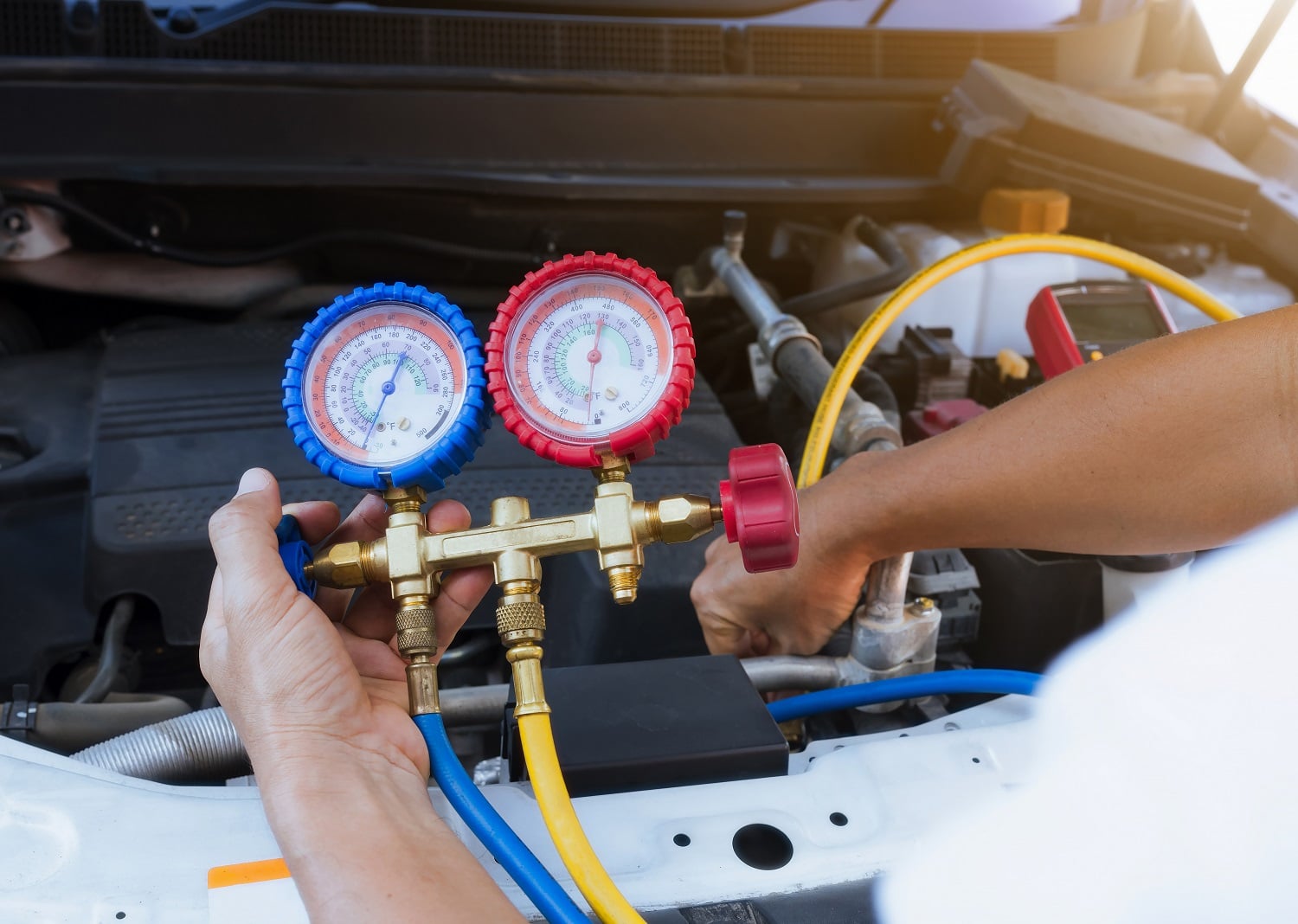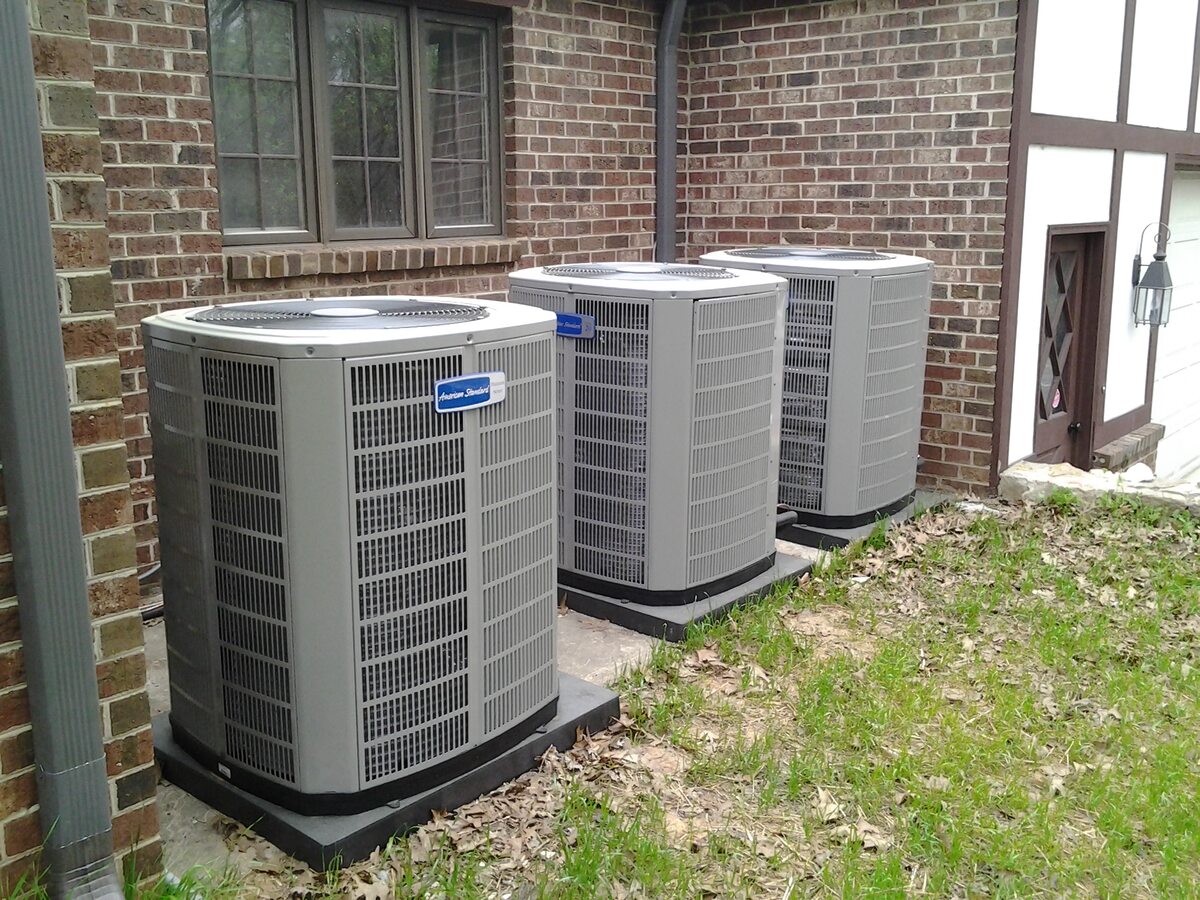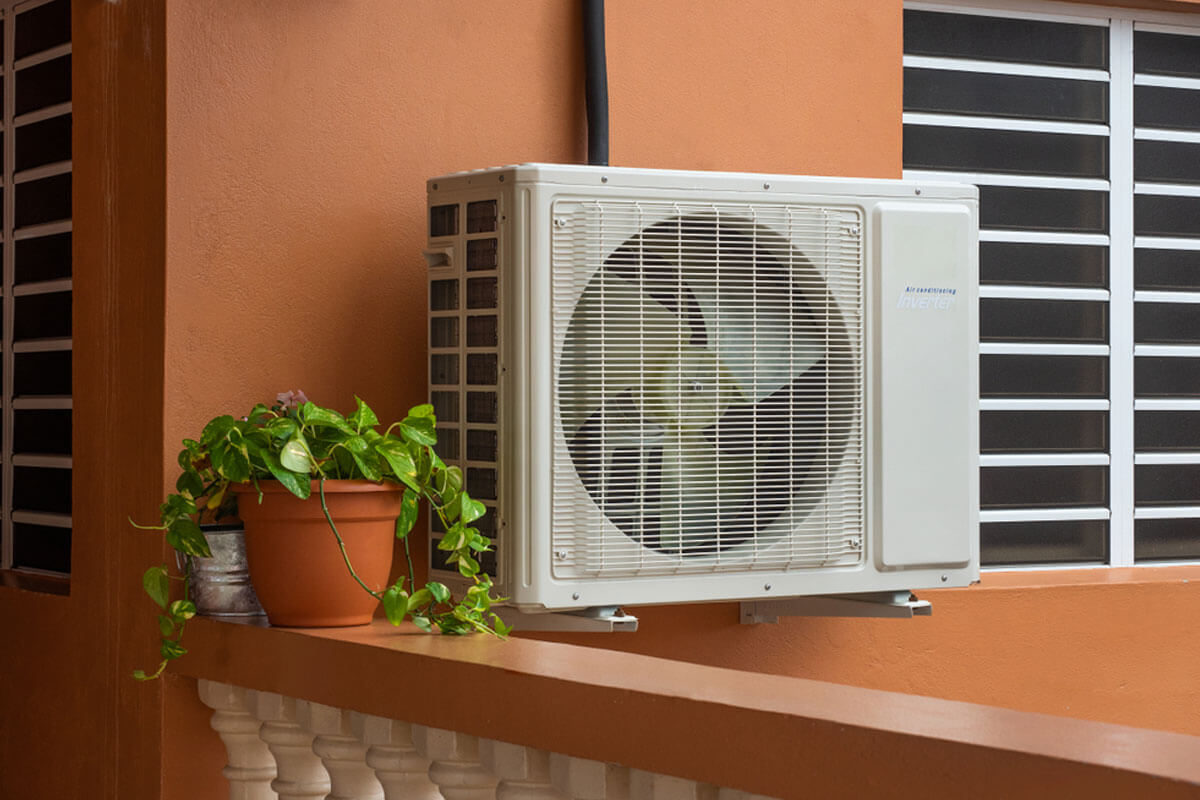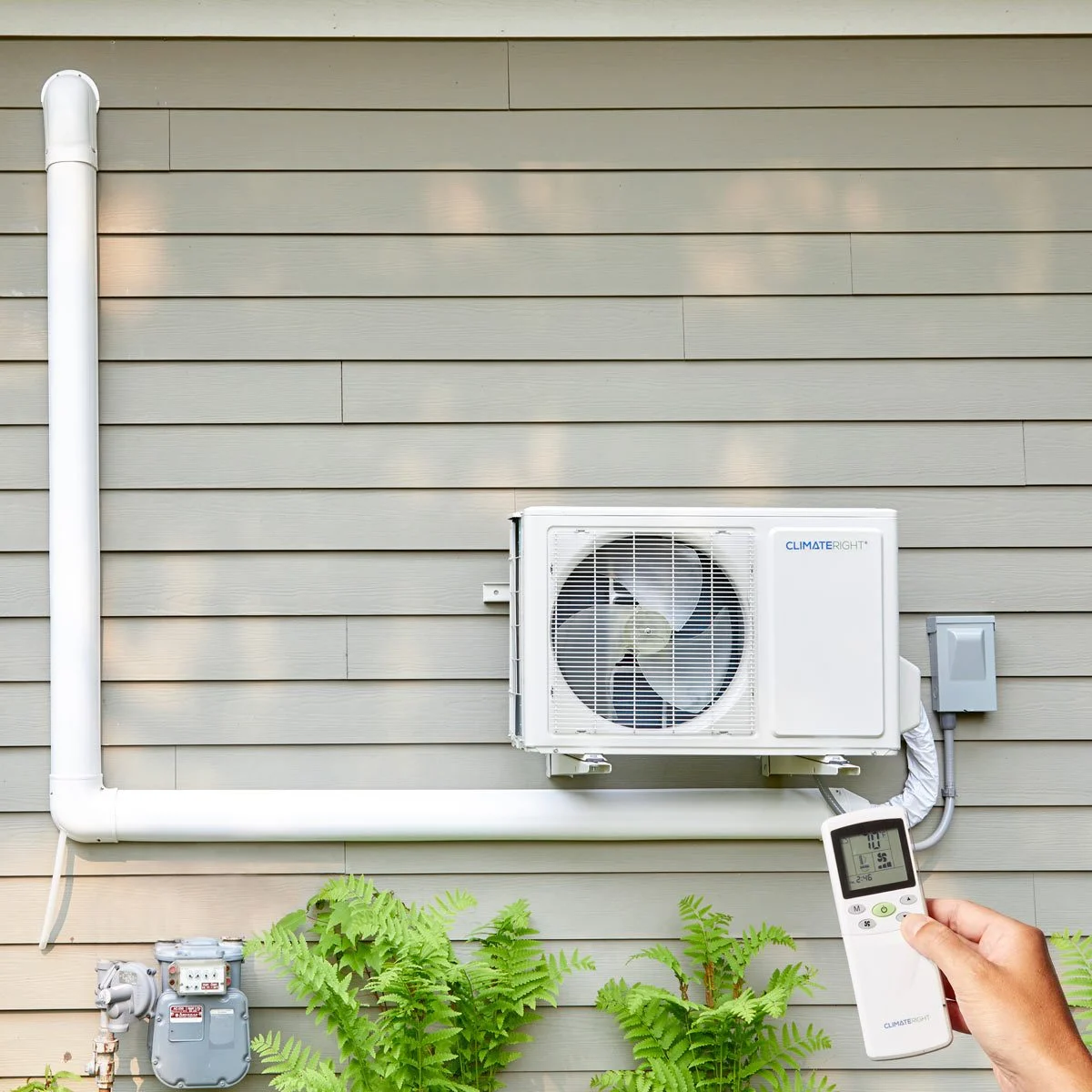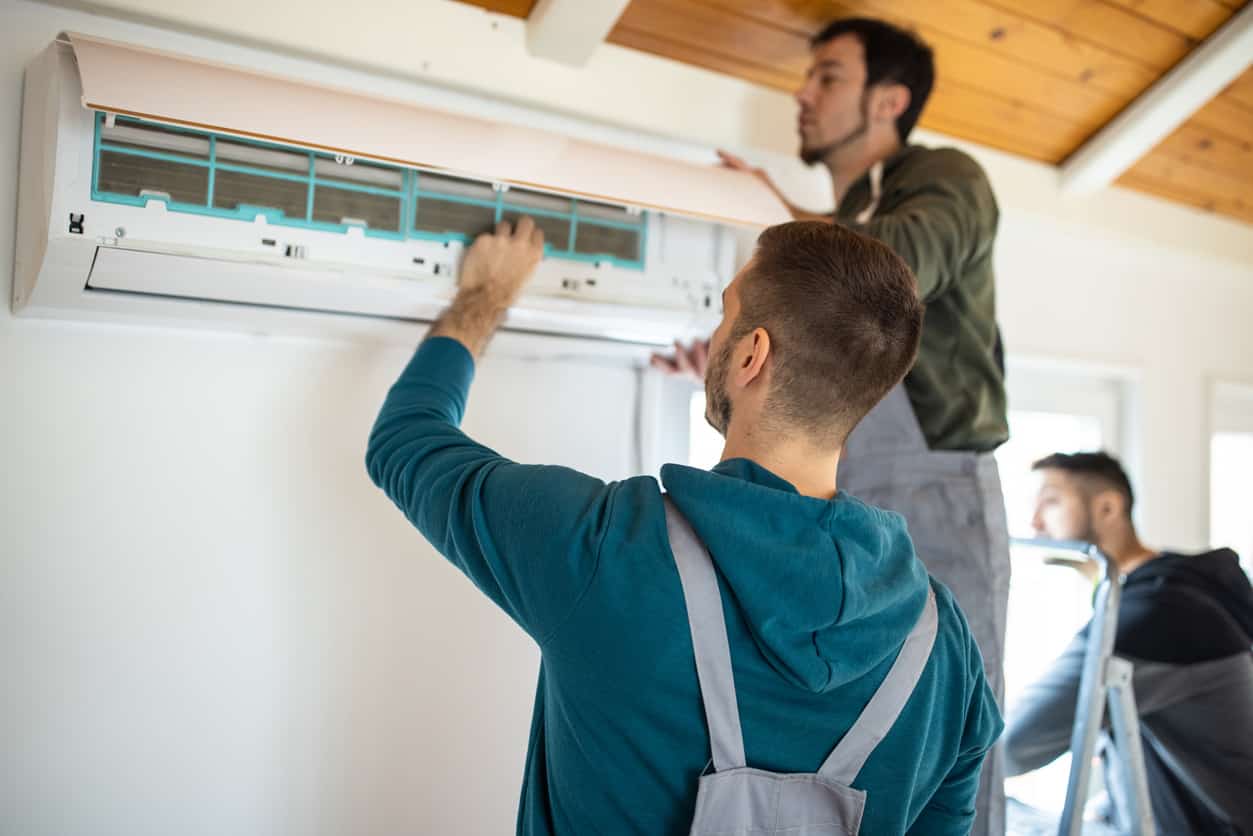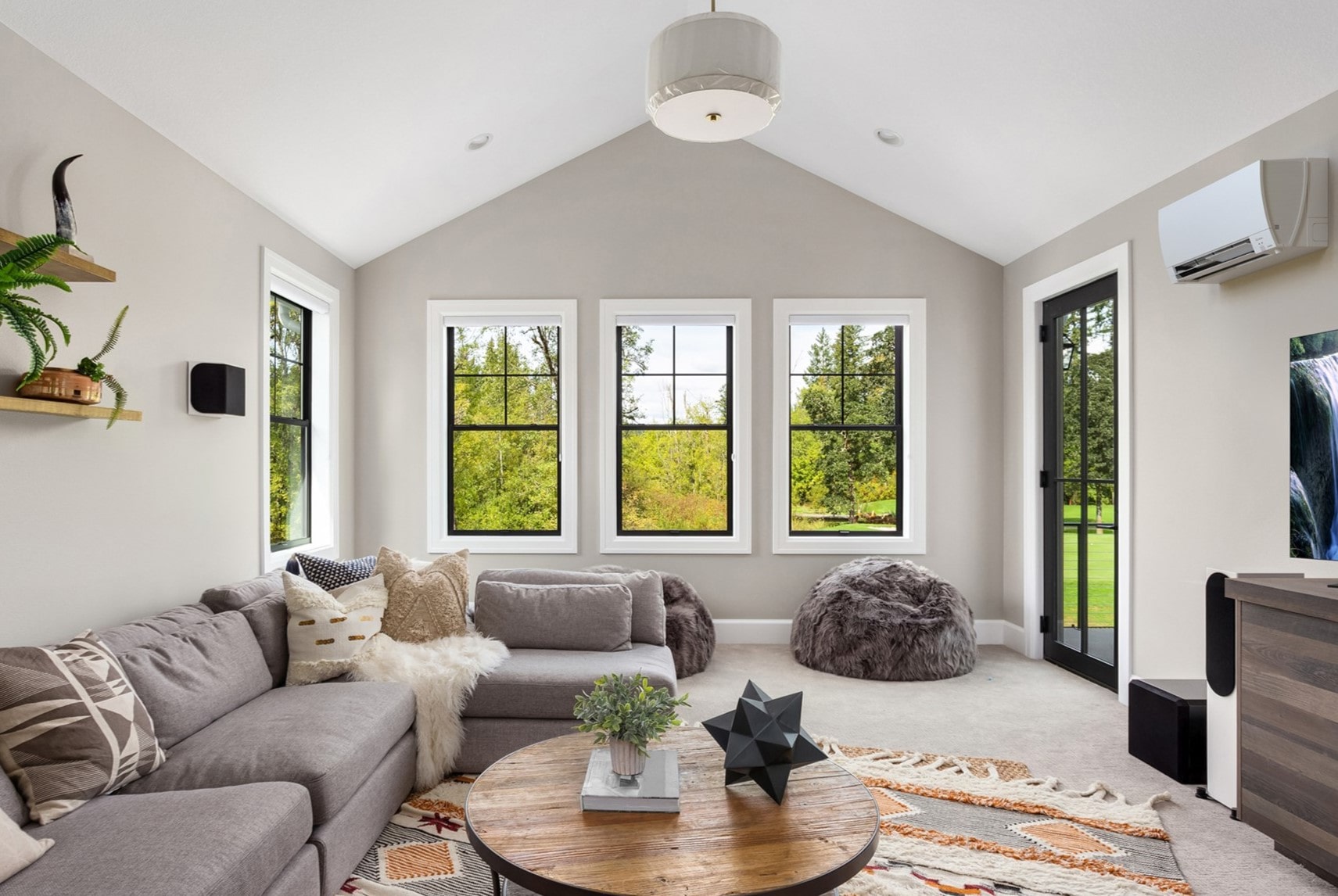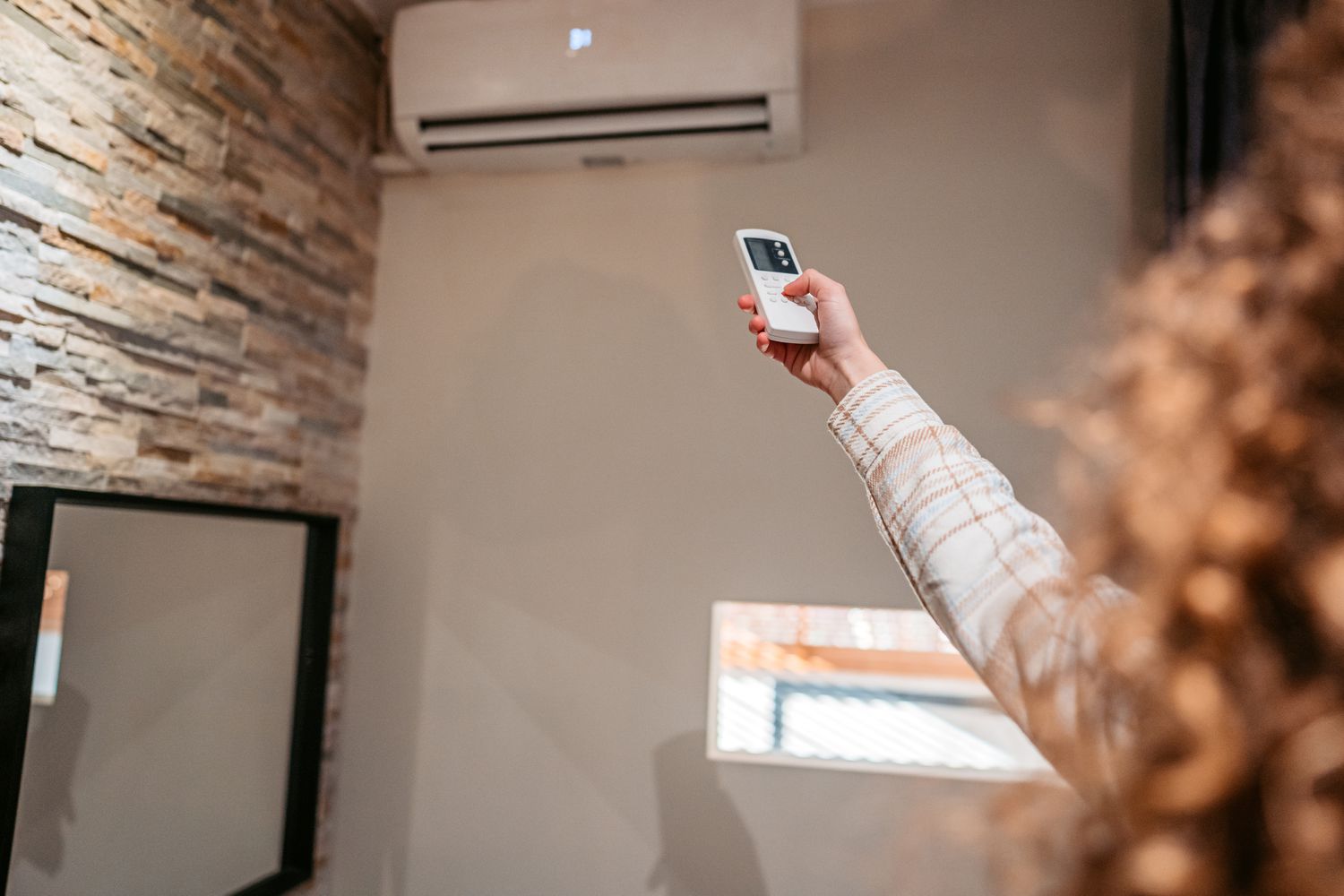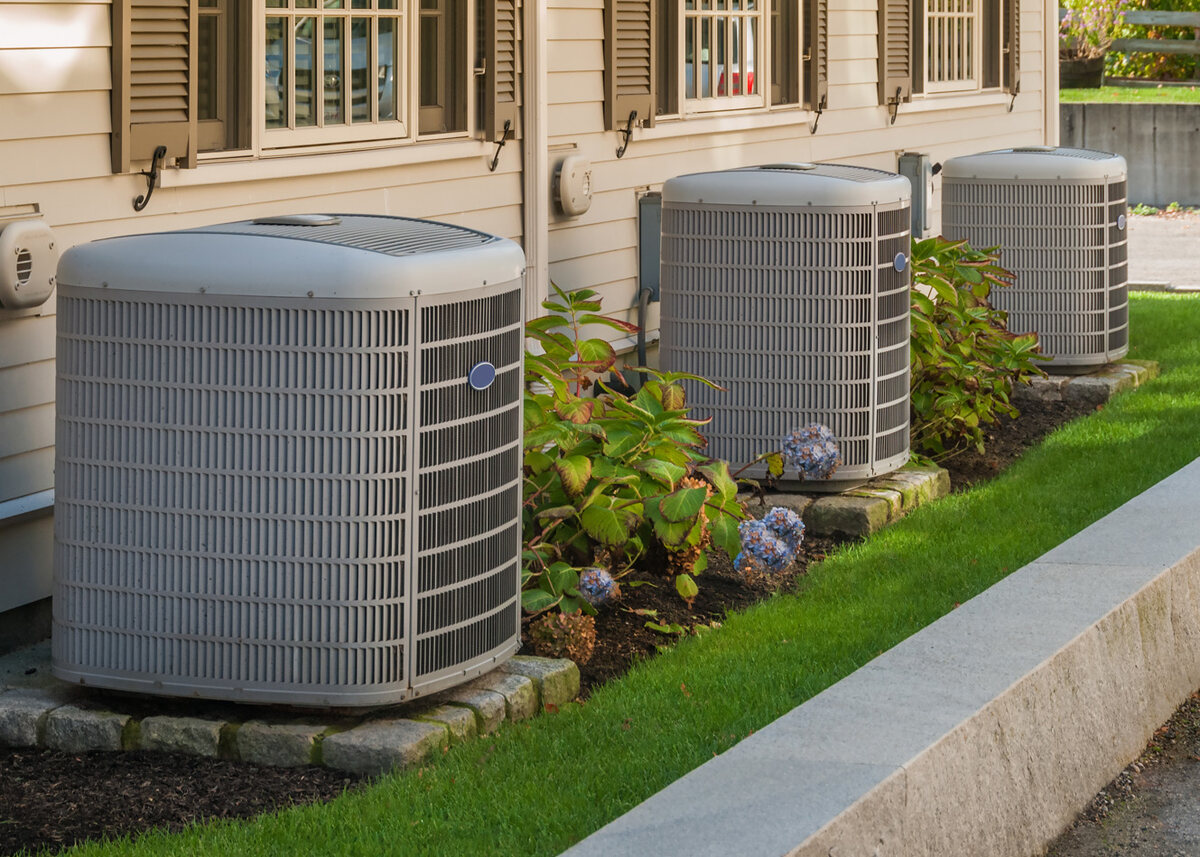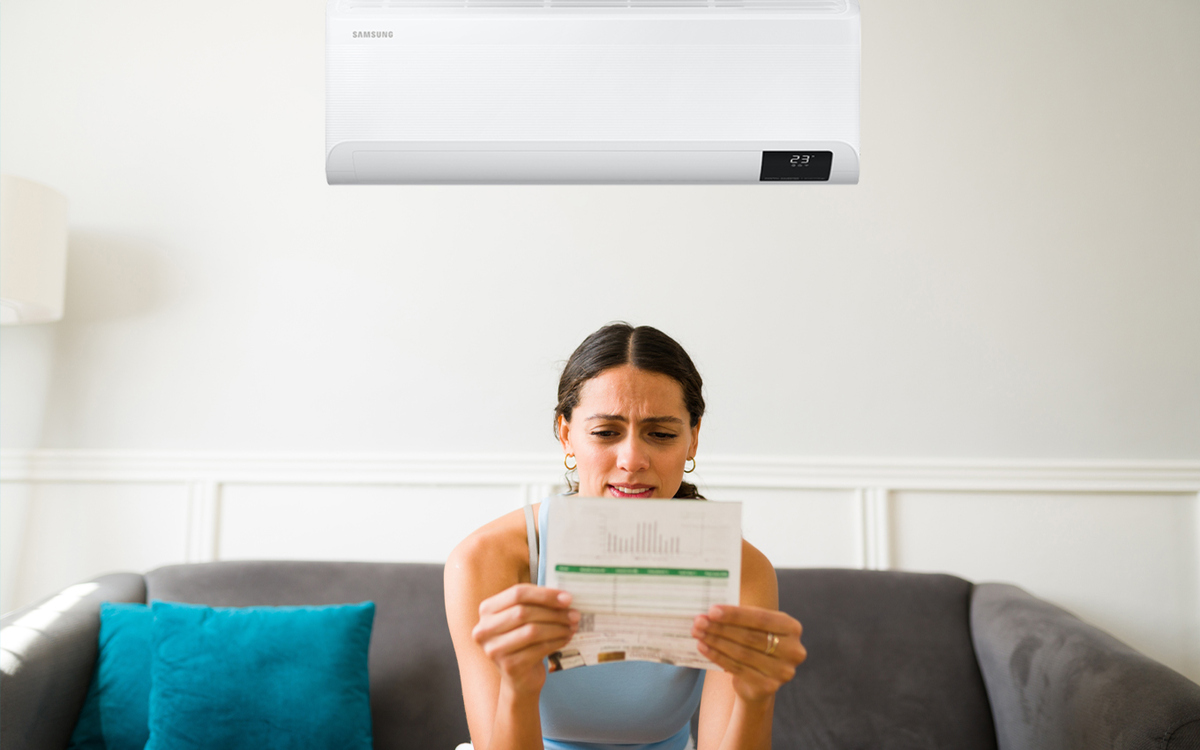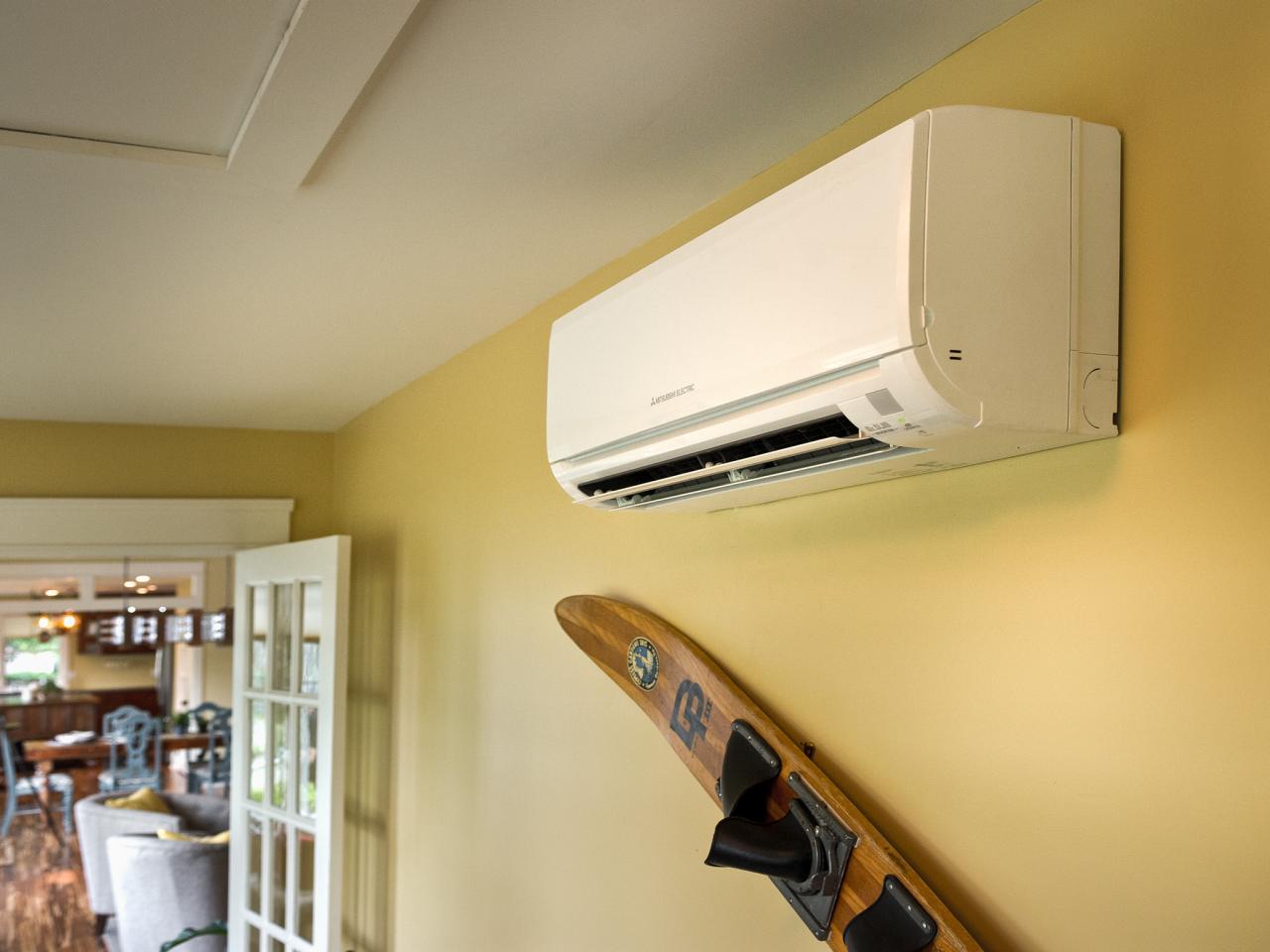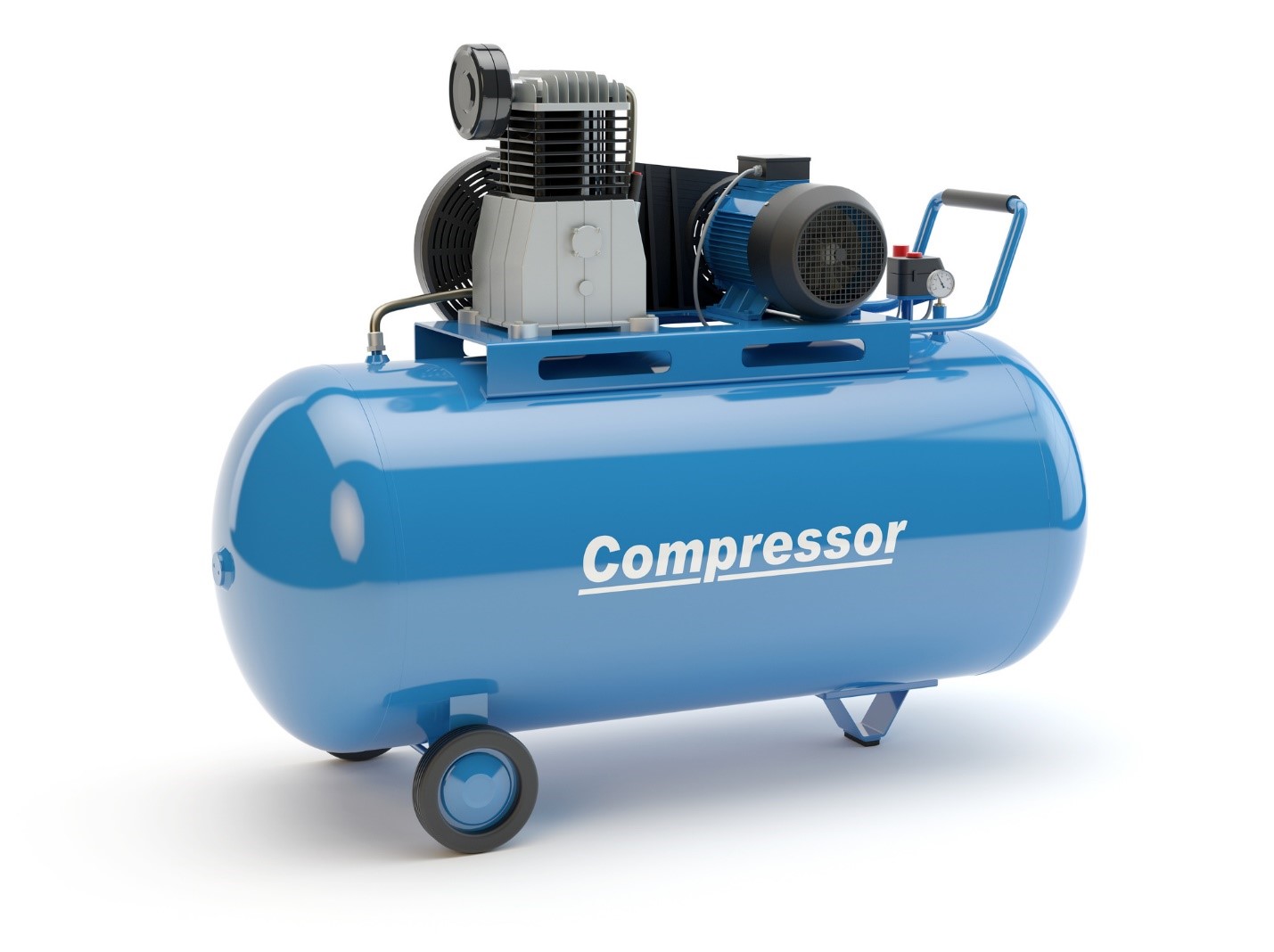Home>Home Maintenance>How Much Does Ductless Air Conditioning Cost
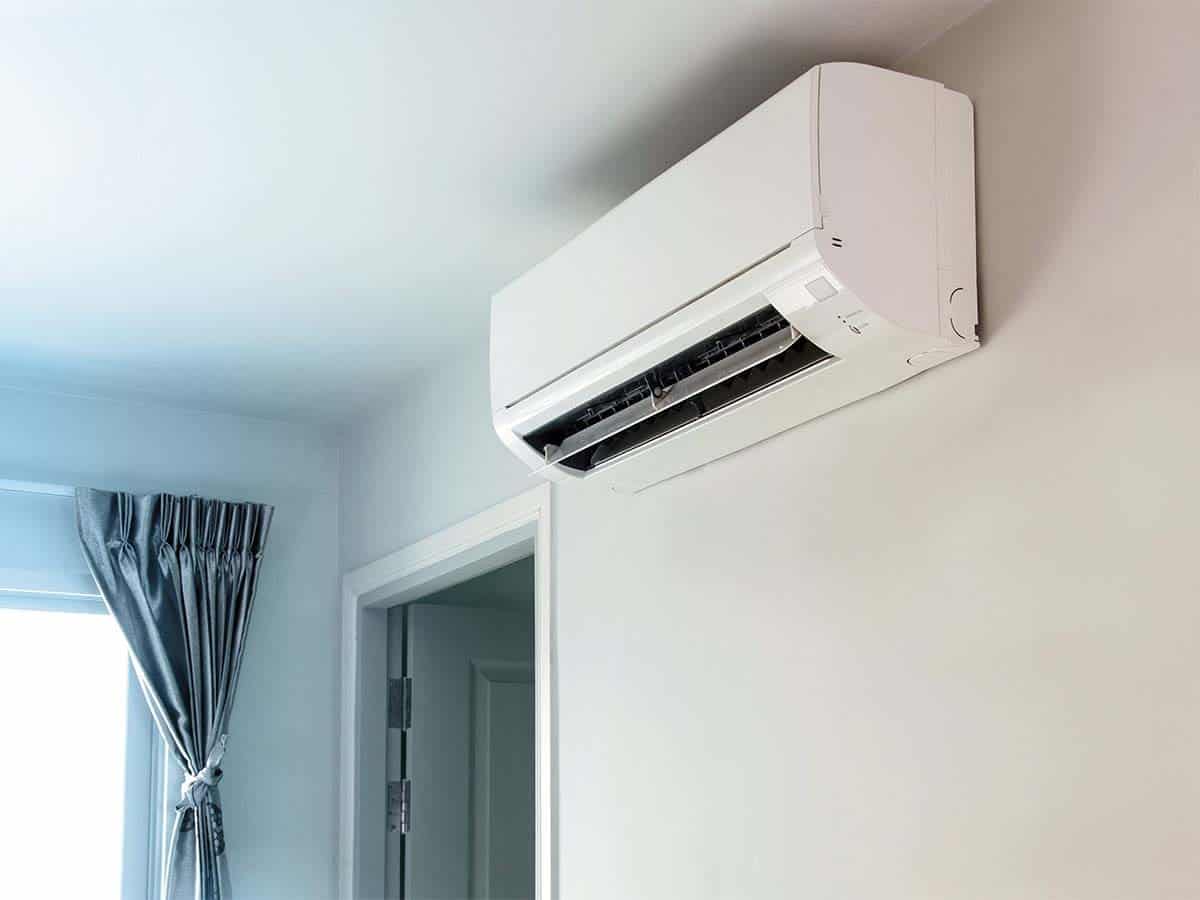

Home Maintenance
How Much Does Ductless Air Conditioning Cost
Modified: March 6, 2024
Find out the average cost of ductless air conditioning for home maintenance. Discover the benefits and prices of ductless AC units.
(Many of the links in this article redirect to a specific reviewed product. Your purchase of these products through affiliate links helps to generate commission for Storables.com, at no extra cost. Learn more)
Introduction
Welcome to the world of ductless air conditioning! With rising temperatures and humidity levels, investing in a reliable cooling system for your home is essential. Ductless air conditioning provides an efficient and convenient solution, offering customized temperature control for individual rooms or zones.
When considering ductless air conditioning, cost is an important factor to consider. Understanding the various factors that impact the overall cost will help you make an informed decision and ensure that your investment aligns with your budget and needs.
In this article, we will explore the different components that contribute to the cost of ductless air conditioning systems. From initial installation and equipment costs to labor, maintenance, and energy efficiency, we will provide you with a comprehensive overview to help you determine the total cost of ownership.
Let’s dive in and explore the factors that impact the cost of ductless air conditioning!
Key Takeaways:
- Installing a ductless air conditioning system involves considering factors like the number of zones, equipment costs, and labor expenses. By understanding these costs, you can make informed decisions and plan your budget effectively.
- Choosing an energy-efficient ductless air conditioning system can lead to long-term cost savings through reduced energy consumption and potential utility rebates. Consider factors like SEER ratings, zoning capabilities, and additional features to maximize comfort and savings.
Read more: How Much Does A Ductless AC Cost
Factors that Impact Ductless Air Conditioning Costs
Several factors influence the cost of ductless air conditioning systems. Understanding these factors will help you determine the overall cost of installation and ongoing maintenance. Here are the key factors that impact ductless air conditioning costs:
- Number of Zones: The number of zones or rooms you want to cool will affect the overall cost. Each zone requires a separate indoor unit, and the more zones you have, the more units you’ll need, driving up the cost.
- Size and Capacity: The size and capacity of the ductless air conditioning system will impact the cost. Larger systems that can cool a larger area will usually cost more than smaller units designed for single rooms.
- Level of Customization: Ductless air conditioning systems offer various customization options, such as multi-stage cooling, programmable thermostats, and zoning capabilities. These additional features can increase the cost but provide enhanced comfort and energy efficiency.
- Brand and Quality: The brand and quality of the ductless air conditioning system will influence the cost. Reputable and well-established brands may come with a higher price tag but often offer superior performance and reliability.
- Additional Components: Certain components may be necessary for the installation of the ductless air conditioning system, such as refrigerant lines, condensate drain lines, and electrical wiring. These additional components will impact the total cost.
- Installation Complexity: The complexity of the installation process can affect the overall cost. Factors like the distance between the indoor and outdoor units, the accessibility of the installation location, and any required modifications to existing electrical or plumbing systems can increase the labor and installation cost.
- Energy Efficiency Ratings: Energy-efficient ductless air conditioning systems offer long-term cost savings on utility bills. While these systems may have a higher upfront cost, they can significantly reduce your energy consumption and, ultimately, save you money in the long run.
- Warranty and Maintenance: Consider the warranty and maintenance requirements when evaluating the overall cost of ductless air conditioning. Longer warranty periods and regular maintenance services may entail additional expenses but can provide peace of mind and help prolong the lifespan of your system.
By considering these factors and assessing your specific needs and budget, you can make an informed decision about the overall cost of your ductless air conditioning system.
Initial Installation Costs
When it comes to ductless air conditioning, the initial installation cost includes several factors. These costs can vary depending on the complexity of the installation and the specific requirements of your home. Here are the key components that contribute to the initial installation costs:
- Indoor Units: Each indoor unit is responsible for cooling a specific zone or room. The number of indoor units you require will impact the overall cost of installation. Larger homes or multi-story buildings may require multiple indoor units, increasing the installation cost.
- Outdoor Unit: The outdoor unit houses the compressor and condenser, and it connects to the indoor units through refrigerant lines. The size and capacity of the outdoor unit will affect the cost, with larger units generally commanding a higher price.
- Refrigerant Lines: Refrigerant lines link the indoor and outdoor units, responsible for transferring the refrigerant to cool the air. The length and complexity of these lines can impact the installation cost.
- Electrical Wiring: Proper electrical wiring is necessary for the installation of the ductless air conditioning system. This includes ensuring adequate power supply and connecting the indoor and outdoor units to the electrical system. Any electrical upgrades or modifications required will add to the installation cost.
- Mounting and Piping: Mounting the indoor units on the walls or ceilings and running the piping for the refrigerant lines and condensate drain lines require professional installation. The complexity and time required for these tasks will affect the overall cost.
- Permits and Inspections: Depending on your local regulations and building codes, obtaining permits and scheduling inspections may be necessary. These administrative requirements may incur additional fees.
- Miscellaneous Costs: Other factors to consider include any necessary carpentry work, such as creating access points for the refrigerant lines or installing wall brackets for the indoor units. These miscellaneous costs can contribute to the overall installation expenses.
It’s important to consult with a professional HVAC technician or contractor to assess your specific installation requirements and provide an accurate estimate of the initial installation costs. They can take into account factors such as the size of your home, the desired number of zones, and any unique challenges your property may pose.
By understanding and budgeting for these initial installation costs, you can ensure a smooth and successful installation of your ductless air conditioning system.
Equipment Costs
When investing in a ductless air conditioning system, it’s important to consider the equipment costs, which include the indoor units, outdoor unit, and any additional components required for proper installation. Understanding these equipment costs can help you plan your budget accordingly. Here are the key components that contribute to the equipment costs:
- Indoor Units: The number of indoor units you need will vary depending on the size and number of rooms you want to cool. Each indoor unit is responsible for cooling a specific zone or room. The cost of the indoor units can vary based on factors such as brand, size, capacity, and additional features.
- Outdoor Unit: The outdoor unit houses the compressor and condenser. It is connected to the indoor units through refrigerant lines and transfers heat from inside your home to the outside. The cost of the outdoor unit will depend on factors such as brand, size, capacity, and energy efficiency rating.
- Refrigerant Lines: Refrigerant lines connect the indoor and outdoor units, allowing the transfer of refrigerant to cool the air. The length and complexity of the refrigerant lines needed for your specific installation will impact the cost.
- Condensate Drain Lines: Condensate drain lines are necessary to remove the excess moisture produced by the cooling process. The cost of the condensate drain lines will depend on factors such as the length and complexity of the installation.
- Thermostat: Ductless air conditioning systems often come with programmable thermostats, allowing you to set temperature schedules and optimize energy usage. The cost of the thermostat may be included with the equipment or offered as an additional accessory.
- Air Filters: Ductless air conditioning systems require regular maintenance, including cleaning or replacing air filters. The cost of air filters can vary depending on the brand and type of filter you choose.
- Remote Control: Many ductless air conditioning systems come with a remote control, providing convenient access to temperature adjustments and other settings. The cost of the remote control may be included with the equipment or offered as an additional accessory.
It’s important to consult with your HVAC technician or contractor to determine the specific equipment requirements for your installation. They can guide you in selecting the right equipment based on your needs and help you understand the associated costs.
By understanding the equipment costs, you can make an educated decision when selecting your ductless air conditioning system and ensure that it aligns with your budget and cooling requirements.
Additional Components and Accessories Costs
When installing a ductless air conditioning system, there are various additional components and accessories that may be required to ensure proper functionality and enhance your overall cooling experience. Understanding these costs will help you plan your budget accordingly. Here are some of the additional components and accessories that may impact the overall cost:
- Line Set Covers: Line set covers are protective covers that conceal the refrigerant lines and electrical wiring running between the indoor and outdoor units. These covers help maintain a tidy and professional appearance. The cost of line set covers will depend on factors such as the length and material used.
- Wall Brackets: Wall brackets are used to securely mount the indoor units on walls or ceilings. Depending on your installation requirements, you may need additional wall brackets, which could impact the overall cost.
- Condensate Pump: If your ductless air conditioning system is installed in a location that doesn’t have easy access to a drain or if a gravity drain is not feasible, you may need to install a condensate pump. The cost of a condensate pump will depend on the brand and specifications.
- Smart Control Systems: Smart control systems allow you to control your ductless air conditioning system remotely, set temperature schedules, and monitor energy usage. While these systems provide enhanced convenience and energy management, they may come with an additional cost.
- UV Air Purifiers: UV air purifiers can be installed with your ductless air conditioning system to improve indoor air quality by killing bacteria, viruses, and other harmful microorganisms. The cost of UV air purifiers will vary depending on the brand and features.
- Dehumidifiers: In humid environments, adding a dehumidifier as an accessory to your ductless air conditioning system can help remove excess moisture from the air. The cost of dehumidifiers will depend on factors such as capacity and features.
- Filter Upgrades: While most ductless air conditioning systems come with standard air filters, you may opt for higher-quality or specialized filters to improve indoor air quality. These filter upgrades may incur an additional cost.
It’s important to discuss your specific cooling needs and preferences with your HVAC technician or contractor. They can help you determine if any additional components or accessories are required and provide you with an estimate of the associated costs.
By considering these additional components and accessories costs, you can customize your ductless air conditioning system to meet your specific requirements and enhance your overall cooling experience.
When considering the cost of ductless air conditioning, it’s important to factor in the initial installation cost, ongoing maintenance expenses, and potential energy savings. Additionally, the size and layout of your space will impact the overall cost.
Labor Costs
When installing a ductless air conditioning system, labor costs are a significant factor to consider. Hiring a professional HVAC technician or contractor is crucial to ensure a successful and efficient installation. Here are some key aspects that impact the labor costs:
- Installation Complexity: The complexity of the installation process will affect the labor costs. Factors such as the number of indoor units, the distance between the indoor and outdoor units, and any required modifications to existing electrical or plumbing systems can increase the labor and installation time.
- Skill and Experience: Skilled and experienced HVAC technicians or contractors may charge a higher labor cost. Their expertise ensures a professional installation, minimizing the risk of errors and ensuring the longevity and efficiency of your ductless air conditioning system.
- Time and Duration: The time and duration of the installation will impact the labor costs. Larger or more complex installations may require more labor hours, resulting in higher costs. Additionally, unforeseen challenges during the installation process may increase the overall labor time and expenses.
- Permits and Inspections: Some local jurisdictions require permits and inspections for installing ductless air conditioning systems. The HVAC technician or contractor may need to obtain these permits and schedule inspections, which can add to the labor costs.
- Clean-up and Disposal: After completing the installation, the HVAC technician or contractor will clean up the job site and may need to dispose of any debris or old equipment. The labor costs may include these clean-up and disposal services.
- Testing and Commissioning: Once the installation is done, the HVAC technician or contractor will test and commission the system to ensure it is functioning correctly. This includes checking for refrigerant leaks, adjusting settings, and verifying proper operation. The labor costs may cover these testing and commissioning services.
It’s essential to obtain quotes from multiple HVAC technicians or contractors to compare labor costs. Consider their experience, qualifications, and customer reviews when making your decision.
Remember, investing in a skilled and reputable professional ensures a proper installation and minimizes the risk of future issues with your ductless air conditioning system. While labor costs may vary, prioritizing quality workmanship is crucial for the longevity and performance of your investment.
Maintenance and Repair Costs
Maintenance and repair are essential aspects of ensuring the optimal performance and longevity of your ductless air conditioning system. While regular maintenance can help prevent major issues, occasional repairs may be necessary over time. Here’s what you need to know about maintenance and repair costs:
Maintenance Costs:
- Professional Maintenance: It is recommended to schedule professional maintenance at least once a year to keep your ductless air conditioning system in top condition. The cost of professional maintenance will depend on factors such as the complexity of the system, the number of units, and any additional services required (e.g., cleaning, filter replacement).
- Filter Replacement: Regularly replacing the air filters is crucial for maintaining proper airflow and indoor air quality. The cost of filters will vary depending on the type and brand you choose. It’s important to follow the manufacturer’s recommendations for filter replacement frequency.
- Other Maintenance Tasks: Additional maintenance tasks may be required, such as cleaning the condensate drain lines, checking electrical connections, and inspecting the refrigerant levels. The cost of these tasks can be included in the professional maintenance service or may be charged separately.
Repair Costs:
- Common Repairs: Common repairs for ductless air conditioning systems may include fixing refrigerant leaks, repairing electrical components, replacing faulty sensors or valves, or addressing issues with the compressor or fan. The cost of repairs will depend on the specific problem and the required parts and labor.
- Emergency Repairs: In some cases, unexpected breakdowns or malfunctions may require emergency repairs. These repairs may incur additional costs due to after-hours service or expedited parts ordering.
- Warranty Coverage: If your ductless air conditioning system is still under warranty, certain repairs may be covered. However, it’s important to review the warranty terms and conditions to understand what is included and any limitations or exclusions that may apply.
- DIY Repairs: While some minor repairs can be performed by homeowners, it’s generally recommended to leave repairs to trained professionals to ensure safety and avoid further damage. Attempting to fix complex issues without the necessary expertise can lead to costly mistakes.
Proper maintenance can help minimize the need for repairs and extend the lifespan of your ductless air conditioning system. It’s important to budget for regular maintenance costs and be prepared for occasional repairs throughout the life of the system.
When selecting an HVAC technician or contractor for maintenance and repairs, consider their experience, reputation, and customer reviews. Remember, investing in professional and reliable service can save you money in the long run by avoiding major breakdowns and costly repairs.
Energy Efficiency and Cost Savings
When considering a ductless air conditioning system, it’s important to understand the energy efficiency of the system and the potential cost savings it can bring. Energy efficiency not only reduces your environmental footprint but also has a direct impact on your utility bills. Here’s what you need to know:
Energy Efficiency Ratings:
- SEER Rating: The Seasonal Energy Efficiency Ratio (SEER) measures the cooling efficiency of an air conditioning system. The higher the SEER rating, the more efficient the system. Energy-efficient ductless air conditioning systems typically have SEER ratings ranging from 16 to 23, providing significant energy savings compared to older, less efficient systems.
- ENERGY STAR Certification: Look for ductless air conditioning systems that have earned the ENERGY STAR certification. This means they meet strict energy efficiency guidelines set by the U.S. Environmental Protection Agency (EPA). ENERGY STAR-certified systems can provide greater energy savings and may qualify for utility rebates or incentives.
- Inverter Technology: Many ductless air conditioning systems feature inverter technology, which allows the system to adjust its speed and output based on the cooling needs. This results in more precise temperature control, reduced energy consumption, and lower operating costs.
Cost Savings:
- Reduced Energy Consumption: Energy-efficient ductless air conditioning systems consume less energy, resulting in lower utility bills. Depending on your usage and local energy rates, you can expect to see significant savings over time, especially compared to older, less efficient systems.
- Zoning Capabilities: Ductless air conditioning systems offer the ability to cool specific zones or rooms, allowing you to customize your cooling needs. This means you can avoid wasting energy by cooling unoccupied areas, resulting in additional cost savings.
- Cost of Maintenance and Repairs: Energy-efficient systems tend to be well-built and have fewer performance issues, reducing the need for frequent repairs. Additionally, proper maintenance can help optimize the system’s efficiency, ensuring maximum cost savings over the long run.
- Utility Rebates and Incentives: Many utility companies and government organizations offer rebates, tax credits, or other incentives for installing energy-efficient cooling systems. These programs can help offset the upfront cost of the system and provide additional savings.
Investing in an energy-efficient ductless air conditioning system can yield significant long-term cost savings. By reducing your energy consumption and taking advantage of rebates or incentives, you can enjoy a comfortable indoor environment while keeping your utility bills under control.
When selecting a system, be sure to review the SEER rating, ENERGY STAR certification, and any other energy-efficient features offered by different models. Consulting with a knowledgeable HVAC professional can help you choose the most cost-effective and efficient system for your specific needs.
Choosing the Right Ductless Air Conditioning System for Your Needs
Choosing the right ductless air conditioning system is crucial to ensure optimal comfort, energy efficiency, and cost-effectiveness for your home. With various brands, models, and features available, it’s essential to consider your specific needs and preferences. Here are some factors to consider when selecting a ductless air conditioning system:
Cooling Capacity:
Assess the size and layout of the areas you want to cool. This will help determine the cooling capacity required for each zone or room. Be sure to choose a system that can handle the cooling load effectively, taking into account factors such as room size, ceiling height, insulation, and windows.
Energy Efficiency:
Look for systems with high SEER ratings and ENERGY STAR certifications. Higher SEER ratings indicate greater energy efficiency, leading to cost savings over time. ENERGY STAR-certified systems meet strict efficiency standards and may qualify for utility rebates or incentives.
Zoning Capabilities:
Consider how many zones or rooms you want to cool individually. Ductless air conditioning systems offer the flexibility to create multiple zones, allowing you to customize your cooling needs and avoid wasting energy on unoccupied areas. Determine the number of indoor units required for your desired zones.
Size and Design:
Consider the size and design of the indoor units, as they will be visible in your living space. Look for units that blend in with your room aesthetics and do not obstruct furniture or decor. Some units may offer optional colored panels or other design features to match your style.
Additional Features:
Consider any additional features or accessories that may enhance your comfort and convenience. These can include programmable thermostats, remote controls, smartphone integration, air purifiers, or dehumidifiers. Evaluate which features are essential to you and ensure the system you choose offers those options.
Brand Reputation and Warranty:
Research the reputation and reliability of different brands. Look for established brands with a track record of quality and customer satisfaction. Additionally, consider the warranty offered by the manufacturer. Longer warranty periods indicate confidence in the product’s performance and can provide peace of mind.
Budget:
Consider your budget when selecting a ductless air conditioning system, taking into account not just the upfront cost but also the long-term energy savings it can provide. Keep in mind that investing in a higher-quality system upfront may result in greater energy efficiency and cost savings over time.
It’s recommended to consult with a qualified HVAC professional to assess your home’s specific requirements and provide recommendations. They can help you evaluate the various factors discussed above and guide you in selecting the right ductless air conditioning system for your needs.
By considering these factors and making an informed decision, you can ensure that your chosen system provides optimal comfort, energy savings, and meet your cooling needs for years to come.
Read more: How Much Does Ducted Air Conditioning Cost
Conclusion
Investing in a ductless air conditioning system can provide you with personalized comfort, energy efficiency, and cost savings. By considering the factors that impact the overall cost, such as installation, equipment, additional components, labor, maintenance, and energy efficiency, you can make an informed decision and plan your budget accordingly.
During the installation process, it’s important to work with a professional HVAC technician or contractor who can assess your specific needs, offer expert advice, and ensure a successful installation. This will ensure that your ductless air conditioning system operates efficiently and delivers optimal cooling performance for years to come.
Maintaining your system through regular professional maintenance and addressing any necessary repairs in a timely manner will help prolong its lifespan and maintain its energy efficiency. Remember to budget for these ongoing maintenance costs to ensure the continued performance and cost-effectiveness of your system.
By choosing an energy-efficient system with a high SEER rating, ENERGY STAR certification, and additional features like zoning capabilities and smart controls, you can further enhance your comfort while maximizing your energy savings. It’s also worth exploring utility rebates and incentives that may be available, as they can help offset the initial cost of installation.
When selecting the right ductless air conditioning system for your needs, consider factors such as cooling capacity, energy efficiency, zoning capabilities, design, additional features, brand reputation, warranty, and your budget. By carefully evaluating these factors and consulting with HVAC professionals, you can choose a system that provides optimal comfort, energy efficiency, and cost savings tailored to your specific requirements.
In conclusion, ductless air conditioning systems offer a customizable and energy-efficient cooling solution for your home. By understanding the costs associated with installation, equipment, maintenance, and repairs, as well as the potential for energy savings, you can make an informed decision and enjoy a cool and comfortable living environment while minimizing your energy consumption and expenses.
Frequently Asked Questions about How Much Does Ductless Air Conditioning Cost
Was this page helpful?
At Storables.com, we guarantee accurate and reliable information. Our content, validated by Expert Board Contributors, is crafted following stringent Editorial Policies. We're committed to providing you with well-researched, expert-backed insights for all your informational needs.
